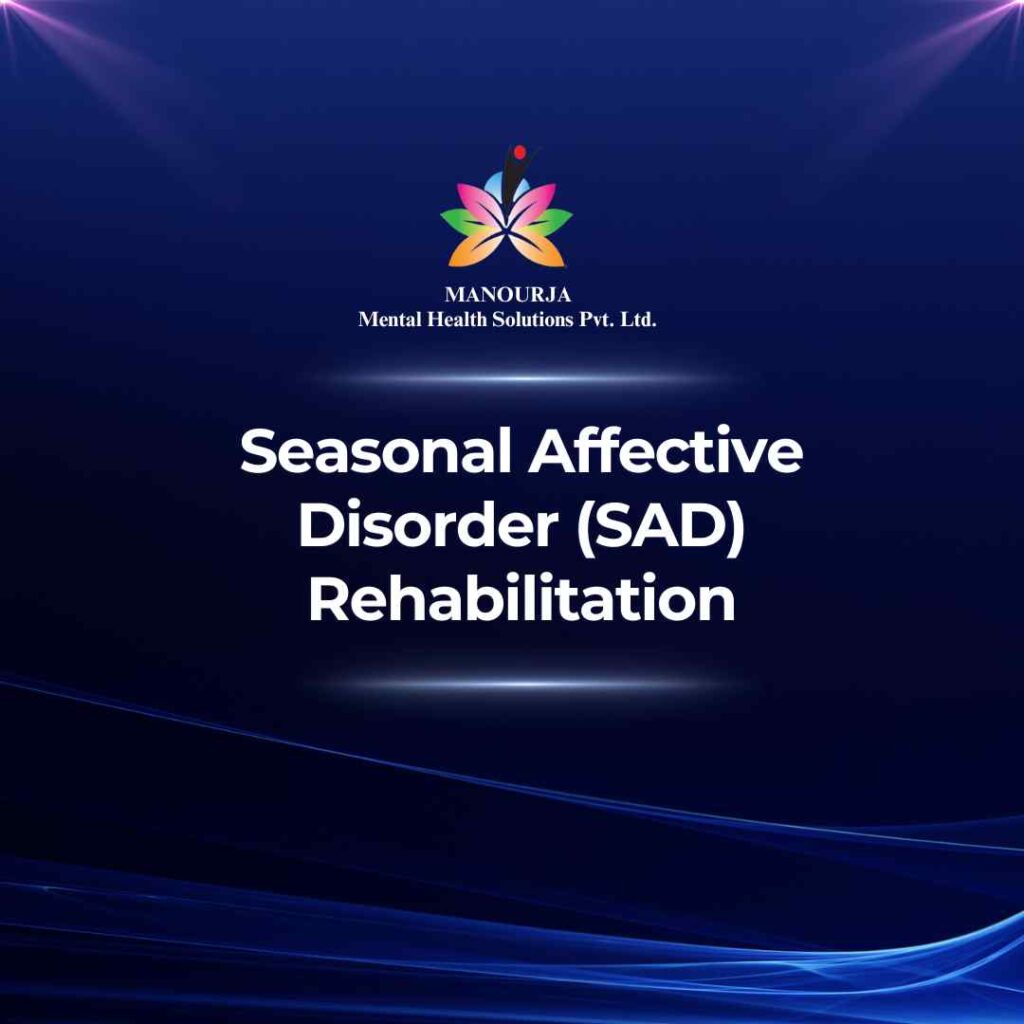Seasonal Affective Disorder (SAD) Rehabilitation

Seasonal Affective Disorder (SAD) is a type of depression that occurs at the same time each year, typically in the fall and winter months when there is less natural sunlight. Understanding the signs and symptoms of SAD is crucial for determining the need for appropriate psychosocial rehabilitation, whether outpatient (OPD) or inpatient (IPD).
Signs and Symptoms of Seasonal Affective Disorder
Key indicators of Seasonal Affective Disorder that individuals and family members should monitor include:
- Depressive Mood: Persistent low mood, sadness, or a sense of despair that occurs most of the day, nearly every day.
- Loss of Interest: Marked loss of interest or pleasure in activities once enjoyed.
- Changes in Appetite: Significant weight gain or increased appetite, particularly cravings for carbohydrates.
- Sleep Changes: Oversleeping (hypersomnia) or difficulty staying awake.
- Lethargy: Feeling sluggish or fatigued most of the day.
- Concentration Difficulties: Problems with focusing or making decisions.
- Feelings of Hopelessness or Worthlessness: These feelings may be more pronounced than in typical cases of depression.
- Social Withdrawal: Reduced social interaction and activity compared to other times of the year.
Indicators for OPD vs. IPD Psychosocial Rehabilitation
Outpatient (OPD) Psychosocial Rehabilitation
- Suitable for individuals with mild to moderate symptoms who can still perform daily functions.
- Effective for those who benefit from regular structured therapy without needing 24-hour supervision.
- Appropriate when individuals have supportive home environments that can encourage daily routines and treatment adherence.
Inpatient (IPD) Psychosocial Rehabilitation
- Necessary for individuals exhibiting severe depressive symptoms including significant suicidal ideation or attempts.
- Recommended if symptoms lead to profound impairment in daily functioning, making constant care and supervision necessary.
- Required if there is a lack of support systems that exacerbate the condition or if previous outpatient treatments have been ineffective.
Factors Influencing the Decision
- Severity of Symptoms: The intensity and impact of symptoms on daily life.
- Safety Concerns: The presence of thoughts of harm or severe impairment in daily functioning.
- Support System: The strength of social supports and their capacity to assist in managing the condition.
- Treatment History: Previous responses to treatment modalities, particularly during similar seasonal episodes.
Role of Psycho-social Rehabilitation in Treating SAD
Psycho-social rehabilitation for SAD aims to restore normal functioning by addressing mood, behavior, and cognitive changes through:
- Light Therapy: Exposure to a bright light every morning to compensate for the lack of natural sunlight can help reduce or prevent symptoms of depression.
- Cognitive Behavioral Therapy (CBT): Specifically adapted for SAD (CBT-SAD), which focuses on challenging negative thoughts related to the dark winter months and increasing activities that promote engagement and pleasure.
- Medication Management: If necessary, the use of antidepressants prescribed by a healthcare provider can be coordinated within the treatment plan.
- Psychoeducation: Educating the patient and family about the disorder and how to manage symptoms effectively.
Techniques and Approaches Used at MANOURJA
At MANOURJA, specific scientific techniques are utilized to treat individuals with SAD:
- Structured Light Therapy Sessions: Regular, timed exposure to a light therapy box.
- CBT-SAD: Providing strategies to manage stress, change negative thought patterns, and enhance coping mechanisms.
- Mindfulness and Relaxation Training: Techniques to help manage stress and improve emotional regulation.
- Group Therapy: Support groups where individuals can share experiences and strategies.
Steps in the Rehabilitation Process at MANOURJA
- Assessment: Comprehensive evaluation to diagnose SAD and assess its severity.
- Personalized Treatment Planning: Developing tailored interventions to address the unique symptoms experienced by the individual.
- Implementation of Therapies: Engaging in prescribed therapies such as light therapy, CBT, and group sessions.
- Regular Monitoring and Adjustment: Assessing progress and adjusting treatments as needed.
- Transition Planning: Preparing for changes in season and planning for maintenance of improvements.
Through targeted psycho-social rehabilitation, individuals with Seasonal Affective Disorder can manage their symptoms effectively and regain a sense of control and enjoyment in their lives. The comprehensive care at MANOURJA ensures that individuals receive tailored support to navigate through challenging times, particularly during the darker winter months.
“Every season brings a new dawn; embrace your journey towards brighter days.”
